Solanum is a genus of annual and perennial herbaceous plants, shrubs, subshrubs and small trees. The genus encompasses over 1700 species. Among these are our well-known potatoes, peppers, tomatoes and tobacco.
Representatives of the Solanum genus have straight, climbing or creeping stems, which are either bare or covered in trichomes (hairs). The leaves are opposite or alternately arranged. The fruit grows from a juicy or dried berry. The seeds are small, coming in a variety of shapes.
Types of Solanum
Here are 3 of the more common species of Solanum:
European black nightshade (Solanum nigrum) is an annual herbaceous plant, growing up to 27 1/2″ (70 cm) tall. The European black nightshade is distinguished by alternately arranged green leaves. The flowers are relatively small. The petals are colored white, and the anthers - yellow. The fruit is a round berry that's colored black.
The European black nightshade can be seen in weedy terrain, near populated areas and around rivers, up to 3930 ft (1200 m) above sea level. The European black nightshade blooms during spring and bears fruit in the summer.
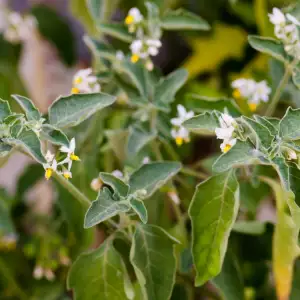
Bitter nightshade (Solanum dulcamara) is a climbing subshrub. The plant is also known by the names bittersweet, bittersweet nightshade, felonwood and others. Solanum dulcamara is distinguished by a bare or nearly bare stem, reaching up to 6.5 ft (2 m) tall. Its leaves are star-shaped. The flowers are of medium size. The petals are purple.
The fruit berry is colored a juicy red, containing numerous seeds. Bitter nightshade is found primarily in humid areas up to 3280 ft (1000 m) above sea level. It blooms in the period June-August and bears fruit during July-October. Bitter nightshade thrives in Europe, Asia, Siberia and the Caucuses.
Solanum luteum Mill is an annual plant, ranging from 6″ (15 cm) to 19 3/4″ (50 cm) tall. The stem is straight or branching. The leaves are up to 1 1/4″ (3 cm) long, oval-shaped. The petals are white, the anthers are yellow. Its fruits are round, either yellowish or orange.
The seeds are small, whitish. Solanum luteum Mill blooms from spring till fall. It bears fruit from the beginning of summer until late fall. It grows in desolate areas, vineyards and orchards in Southeast Europe, the Mediterranean and Caucuses.
Composition of Solanum
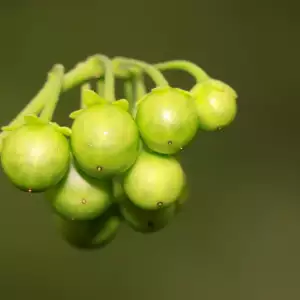
The European black nightshade and bitter nightshade are used for medicinal purposes. Solanum nigrum is a source of tomatidine, glycoalkaloids, solamarin, glycosides - solaceine and solanine and others. Solanum dulcamara is rich in saponins, glycoalkaloids, glycosides, tannins, provitamin A, vitamin C and others.
Collecting Solanum
The aboveground parts of European black nightshade and bitter nightshade are used in medicine. The young branches along with the leaves are collected during the plant's bloom season - July to September. Be sure to pick it during sunny and non-humid weather, so the herb doesn't deteriorate in quality.
Lay out the picked plants in the shade to dry. You can also use a dehydrator, set the temperature up to 110°F (45 °C). The dried herb is green, it doesn't have an intrusive scent. 11 lb (5 kg) of collected bitter nightshade branches yield 2 lb (1 kg) of dried herb.
About 15.5 lb (7 kg) of European black nightshade yield 2 lb (1 kg) of dried herb. The dried plants need to be stored in dark and ventilated areas with low humidity. They need to be separated from the nontoxic species.
Benefits of Solanum
Bitter nightshade (Solanum dulcamara) has been well known in folk medicine for centuries. The fruit stems of the plant are used to make remedies with a diuretic, anti-inflammatory and diaphoretic action. The laxative effect of the herb is also highly prized. Further, it's used to make compresses to soothe inflamed and injured skin.
Bitter nightshade has proven effects against cough, shortness of breath, rheumatism, pleurisy, fever. According to folk healers, it's also beneficial in treating neuralgia, sprains, painful menstruation, diarrhea, edema, bladder problems, syphilis, gout, herpes, scabies and others.
Just like bitter nightshade, Solanum nigrum has been a part of folk medicine for centuries on end. Healers claim that it has relaxing, antiseptic, analgesic and diuretic effects, which is why it has long been used to treat anxiety, depression, neuralgia and more.
It's also potent against seizures, headaches and skin diseases. The plant helps treat boils, psoriasis, bruises, eczema, rashes and more. Remedies from it are applied even for itchy anus. In the past, extracts from it were used as a sleep aid.
Folk Medicine with Solanum
Fresh leaves of bitter nightshade (Solanum dulcamara) can be used to make a substance for closing wounds and healing swelling and hemorrhoids. To make it, soak mashed fresh leaves of the plant in olive oil (1:10 ratio). Leave them to soak for 20 days. Apply the resulting mixture to the affected skin.
Folk medicine also offers recipes with European black nightshade (Solanum nigrum). One of these uses the ripe seeds of the plant as a remedy for healing boils, rashes and festering wounds. To make the ointment, first crush several ripe seeds of the herb well and mix them with sunflower oil. Apply the resulting substance to the problem areas.
Dangers of Solanum
The numerous studies that Solanum dulcamara and Solanum nigrum have been subjected to show that the various parts of the plants can be toxic. Never use the herbs without first notifying competent experts.
Improper use of one of the 2 plants can cause nausea, vomiting, dizziness, sleepiness. If you notice any of these symptoms, seek medical help immediately.
Medical professionals will provide treatment based on the degree of toxicity. If the individual does not seek medical attention if poisoned by either of these 2 plants, the outcome may be fatal.
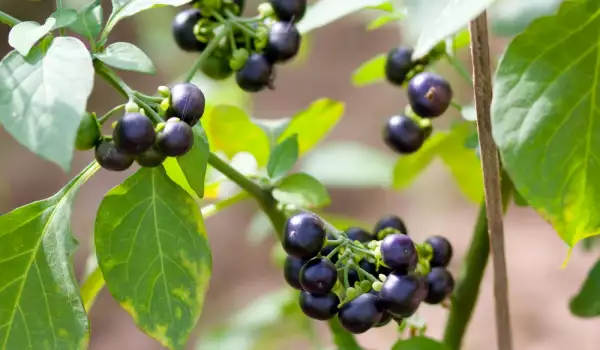
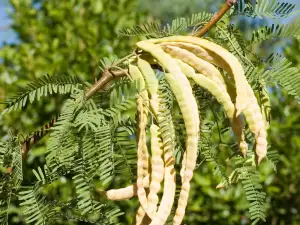
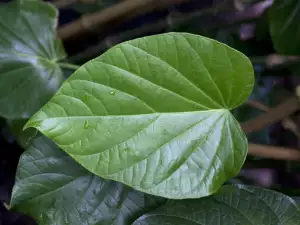
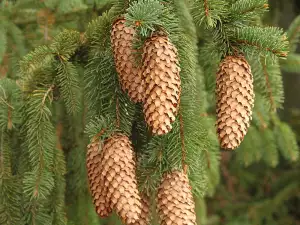
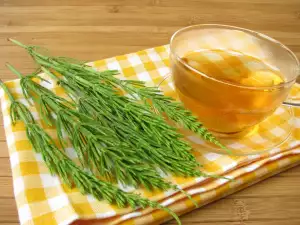
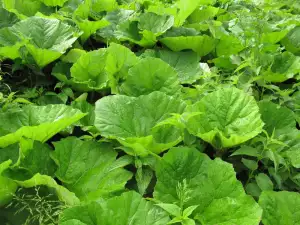
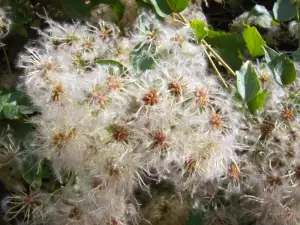
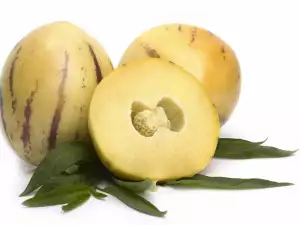

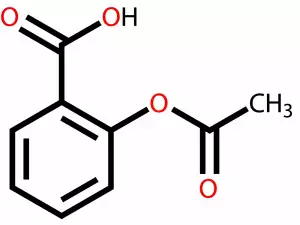


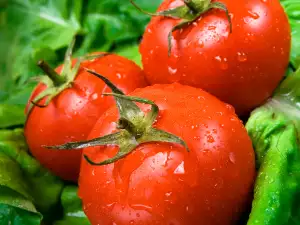
Comments